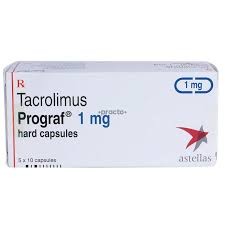
TRINIDAD and Tobago (T&T) is currently on its worst leg of this pandemic.
Daily new cases are 300 to 600 with daily deaths now reaching the 20s. Internationally, this pandemic has been scourging for almost one-and-a-half years. Despite things seeming hopeless, we have gained so much more knowledge about the virus in that time. As a result, we now have a vaccine. At present, the current surge in T&T has been large. However, the new knowledge we have about the disease is very useful and gives us hope.
The coronavirus is airborne and spreads by droplet infection. Via inhalation, it gets to the back of our throat or pharynx. Then by attaching to the cells of the pharynx it enters them. While in the cell, the virus overcomes the cell’s own metabolism to its own advantage becoming part of it.
Thus, it now uses the cell as a host to make its own replicas. Within a short span of one to two days, there are now millions of viruses within these host cells. These new viruses exit the cells and infect other cells repeating the process of infection, invasion and replication.
As this occurs and viruses circulate, the body’s immune system recognises unique proteins on the surface of the virus that look like spikes and becomes aware of the invasion. The immune system then fights the virus by producing antibodies that binds to this viral surface protein so that it is identified as foreign.

Cells of the immune system can now easily pick up and eliminate this foreign virus. The immune response produces chemical mediators like cytokines and orchestrates a reaction against the virus.
These chemicals cause systemic symptoms like fever, headache, malaise, joint pain, muscle ache, fatigue and occasionally diarrhea. Local symptoms due to these chemical mediators at the site of infection include cough and sore throat.
This response of the immune system eliminates any virus that enter the body and most eventually recover.
The time of infection to presentation of symptoms is called the incubation period. It is a period that presents with no symptoms, but the infected person can spread the virus. It can last up to 14 days.
However, an average of five days after being infected, patients become symptomatic. In 80% of cases of infection, symptoms may last from five days to a week then dissipate and recovery follows.
Thus, the majority of those who are infected with Covid-19 only suffer relatively minor symptoms which settle in merely days. This is known as the first phase of the infection and the limit to the course of the disease in the majority of cases.
However, in the remaining 15% to 20% of cases, a dangerous second phase ensues.
Indicators of this dangerous phase of disease progression include a recurrence of the fever higher than before, the cough also recurs, but is now deep and hacking associated with difficulty in breathing. This triad of high fever, hacking couch and difficulty breathing, warn you that the disease has taken a dangerous turn.

It is important to understand that this second dangerous phase is not because of the virus or a secondary pneumonia as previously thought.
Because of immune system’s antibody production to the surface proteins of the virus, it is recognised as foreign body by immune cells and an immune reaction is launched against it to eliminate it.
However, similar surface proteins to the viral surface proteins exist in the blood vessels of certain organs like the intestines, liver, kidneys, and especially the lung.
This results in these antibodies not only launching an immune reaction against the virus, but also against these blood vessel cells.
This leads to excess secretion of immune mediated cytokines called cytokine showers. If not controlled, they can progress to cytokine storms that present as high fever and a hacking cough.
This excess immune reaction disrupts the normal smooth blood vessel walls in the lung that precipitates blood clot formation and occlusion of the vessels.
Blood clot formation results in reduced oxygenation of blood in the lung and reduced oxygen saturation of blood. This leads to breathlessness and in some can be catastrophic. This is why many of these cases may need external oxygen and, in the worst-case scenario, ventilators. If not controlled, death can result.
It is still unclear why some individuals are prone to this second dangerous phase and others are not.
However, we must anticipate it so that if it does occur and we can remedy the situation to save lives.
If a week after presentation of the first symptom, high fever, hacking cough and breathlessness ensues, intervention is needed.
At this second phase administering of corticosteroids can prevent cytokine showers form developing into storms. It is important to note that timing of corticosteroid administration is essential.
Too early around the first phase will result in prolongation of viral replication and a poorer prognosis.
Too late in the second phase may not quell the cytokine storms and the dangerous second phase ensues.
Steroids alone does not prevent the clotting within the lung blood vessels. To prevent this, we need anticoagulation medication to thin the blood and prevent clotting. These two key medications can mean the difference between life or death of many Covid-19 afflicted patients, but even they have serious side effects and consequences.
Dr Visham Bhimull is a Primary Care Physician MBBS (UWI) Diploma in Family Medicine (UWI)
![]()












